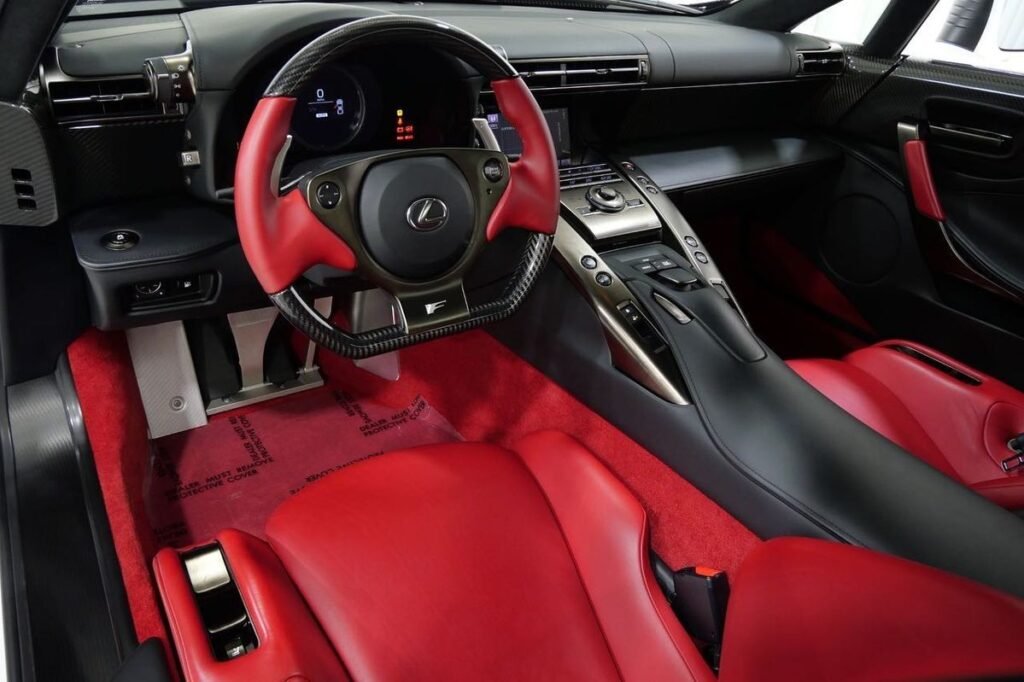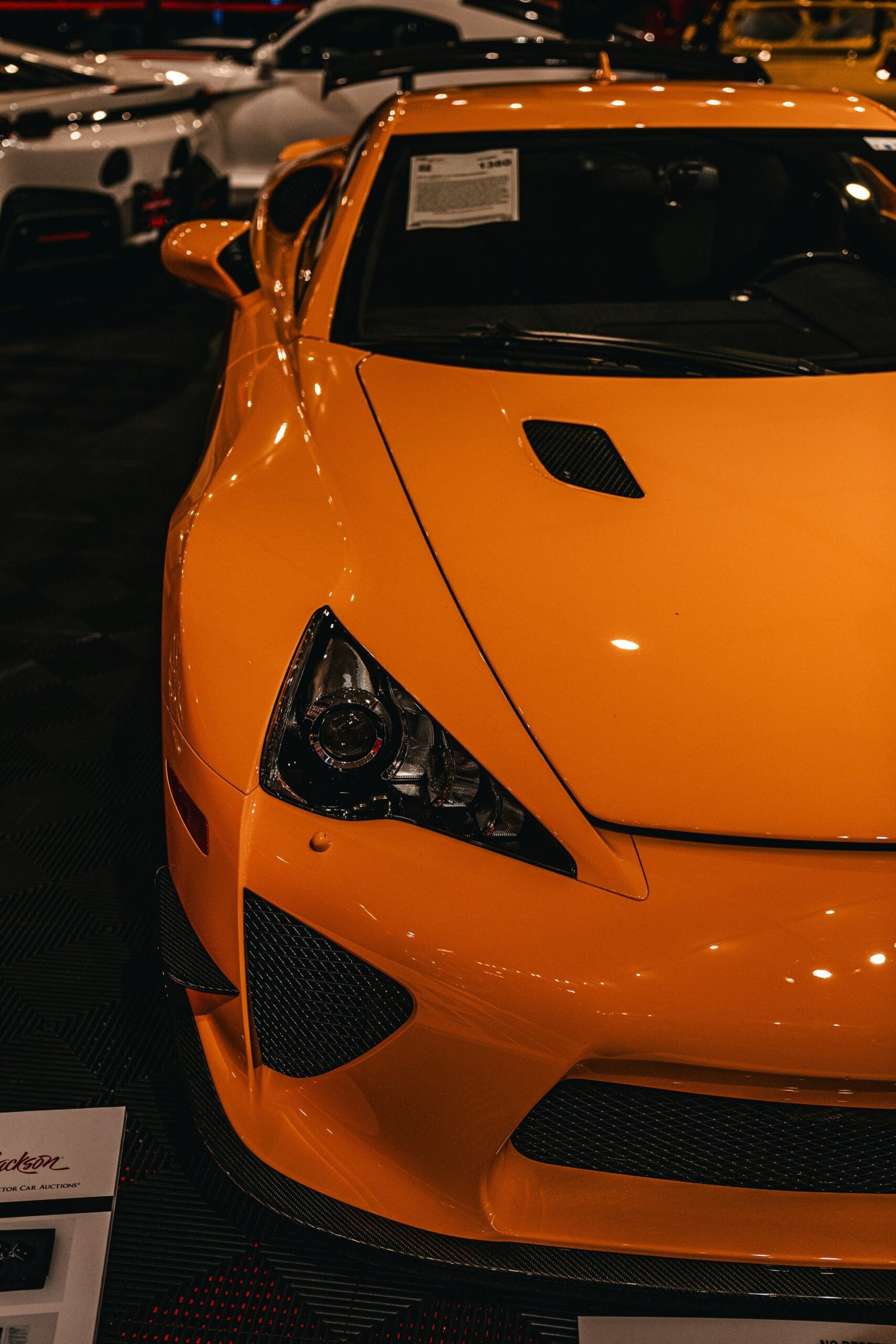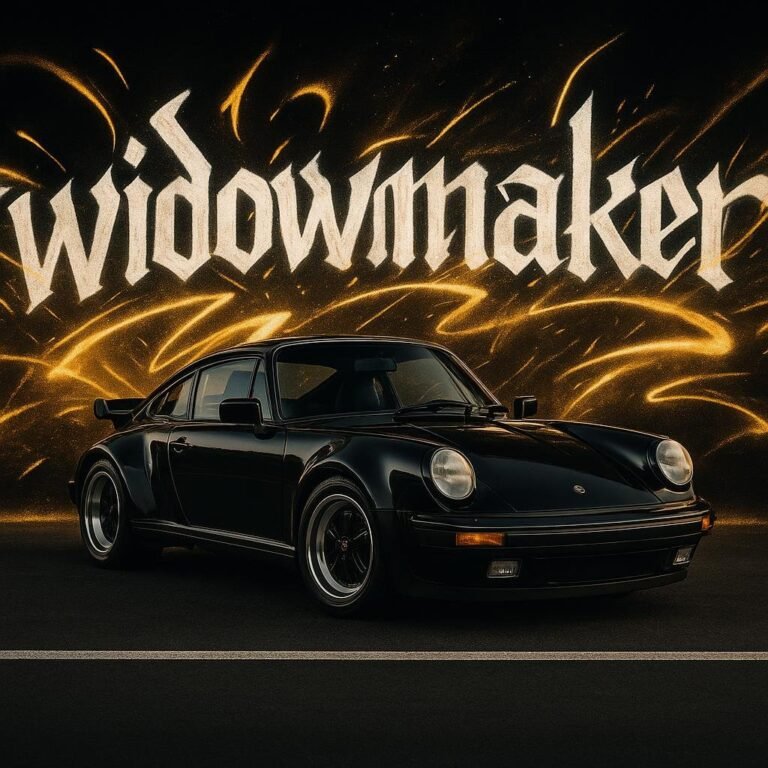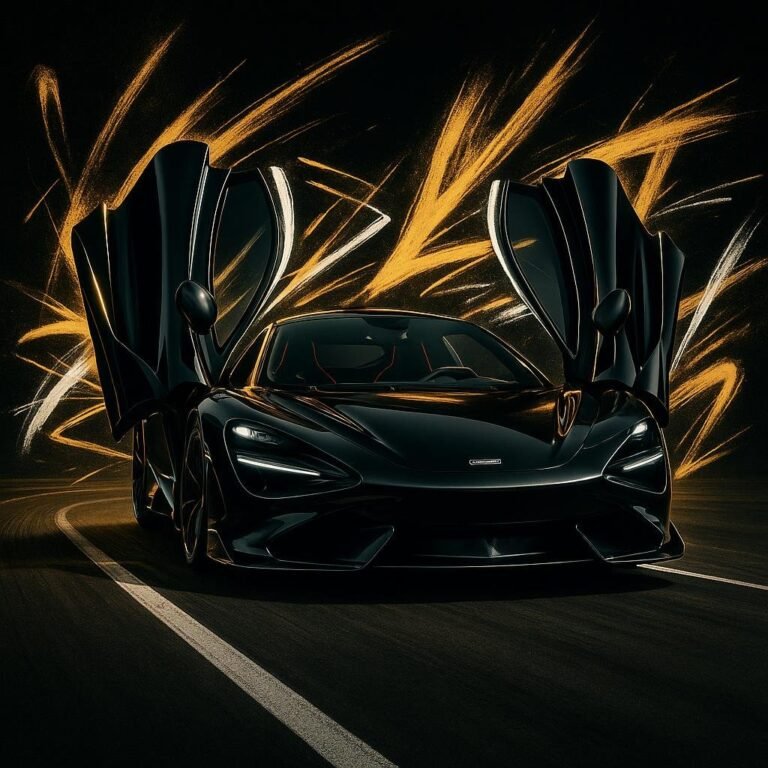Origins and Development
The Lexus LFA? It didn’t just appear out of thin air. It started as a sort of secret skunkworks project back in 2000, when a handful of engineers decided Toyota deserved a true supercar.
Akio Toyoda got involved early on. Not just as a bigwig, but as a genuine driving nut—his influence made all the difference, especially when it came to getting the board to say yes to a wild, decade-long adventure.
Vision and Purpose
Picture this: Haruhiko Tanahashi, the mind behind the Celica GT-Four, takes a spin at the Shibetsu proving ground in Hokkaido. The year? 2000. After a few laps, he tells his buddies, “This place is screaming for a supercar.”
Next thing you know, they’re sketching wild ideas on napkins. Tanahashi and chief test driver Hiromu Naruse start plotting. Naruse—never one to settle—pushes for a supercar with a unique soul.
They dream up a front-mid engine setup for perfect balance. The chassis? They want it to thrill pros but keep rookies out of trouble. That’s the DNA that would eventually shape the LFA.
But, of course, they need Toyota’s official blessing. Given Toyota’s obsession with mass production, convincing the higher-ups to back a crazy, low-volume, high-cost project? Not exactly a walk in the park.
Key Influences and Inspirations
Naruse decides to loop in Akio Toyoda, who’s running things in China at the time—and just happens to be family royalty. Akio’s business sense and love for cars make him the ultimate ally.
Akio admits he was pumped about the idea, but kind of puzzled about how it would fit into Toyota’s world. So, the trio jumps behind the wheel of every supercar they can get their hands on, just to see what makes them tick.
Akio realizes, hey, this car doesn’t need to fit in. It can be the brand’s “secret sauce,” the thing that makes Lexus unforgettable. That whole “halo effect” idea? It becomes the LFA’s reason for existing.
When Lexus gears up for its Japan debut, Akio sees his shot. He pitches the LFA as the ultimate flagship—a car that’ll make every Lexus feel a little more special.
Project Milestones
Key Development Timeline:
- 2000: Napkin sketches at Shibetsu proving ground
- 2003: First LFA prototypes hit the pavement
- 2005: Akio moves up to VP of product planning
- 2007: Gazoo Racing team starts thrashing LFA prototypes
- 2009: Akio makes the production official
Akio faces a wall of resistance. At a management showdown, everyone says no. Even the R&D folks push back—they see the LFA as a resource black hole.
Every part has to be designed from scratch. Nothing gets borrowed from other cars. The final price tag? Still a closely guarded secret—and probably for good reason.
Eventually, the board caves…with a catch. They cap production at 500 units. It’s a letdown for some, but honestly, that’s par for the course with unicorn supercars.
Debut and Initial Public Reaction
The LFA struts its stuff for the first time at the Tokyo Motor Show in 2009. On August 5, 2009, Akio Toyoda makes it official, announcing the limited run at the Centre for Automotive Research in the US.
Production kicks off December 15, 2010, at Toyota’s Motomachi plant. The first LFA rolls out to cheers from Akio, brand ambassador Riyo Mori, and a crowd of 150 proud team members. What a day.
But there’s a bittersweet note—Hiromu Naruse, the heart and soul of LFA testing, had passed away in a Nürburgring accident just six months earlier. That loss lingered in the air.
The LFA’s debut isn’t just a car launch. It’s a thunderclap—a moment that puts Lexus and Japanese supercars on the global map.
Name, Engine, and Performance
The LFA’s name isn’t just letters—it’s a statement. The 4.8-liter V10, built with Yamaha, cranks out 552 horsepower and belts out a sound that’s more rock concert than engine. When Toyota’s luxury crew teamed up with Yamaha, they didn’t just make an engine—they reimagined what Lexus performance could mean.
LFA Naming and Meaning
LFA stands for “Lexus Future Advance.” It’s Toyota’s way of saying, “We’re not just about comfy sedans.” This car ditches the usual alphabet soup—LS, ES, RX—and claims its own spot in the lineup.
Why that name? Because the LFA isn’t just a car—it’s a technology flex. That badge? It’s a promise that Lexus isn’t afraid to get weird, wild, and a little bit cocky.
Unlike the rest of the Lexus family, the LFA stands alone—exclusive, rare, and not trying to blend in. It’s got swagger, and honestly, it deserves it.
V10 Engine Collaboration with Yamaha
The 4.8-liter V10 (1LR-GUE) uses a 72-degree bank angle. Yamaha brings their high-revving know-how from bikes and boats, and suddenly, Toyota’s building an engine that can hang with the best from Europe.
This partnership isn’t just a handshake; it’s a meeting of mad scientists. They chase Formula 1 inspiration, using exotic materials and laser-precise manufacturing. Yamaha’s secret sauce? Their ear for acoustic magic and their obsession with high RPMs.
Every gram in that engine matters. Lightweight bits, tight tolerances—nothing’s left to chance. The result? An engine that loves to scream but still acts like a Lexus when it comes to reliability.
Performance Capabilities
The LFA’s V10 cranks out 552 hp at 8,700 rpm, 354 lb-ft at 6,800 rpm. That’s a jaw-dropper for a naturally aspirated Japanese engine, and it puts the LFA right up there with the world’s finest.
0-60 mph? Just 3.6 seconds. Top speed? 202 mph, if you’ve got the guts. Power goes to the back wheels through a six-speed single-clutch automated manual. Simple, brutal, and effective.
Key Performance Specs:
- Power Output: 552 hp @ 8,700 rpm
- Torque: 354 lb-ft @ 6,800 rpm
- Transmission: 6-speed automated manual
- Top Speed: 202 mph
- 0-60 mph: 3.6 seconds
This V10 loves to spin—9,000 rpm redline, no turbos, just pure mechanical symphony. It’s got that race-car vibe, and it doesn’t apologize for being a little bit wild compared to all the boosted rivals.
Sound Engineering
Let’s talk about the LFA’s voice. That exhaust note? It’s legendary. Yamaha’s acoustic wizards spend ages dialing in the sound until it’s more music than noise.
From 3,000 rpm to redline, the note climbs and swells—a crescendo that makes the hair on your arms stand up. The connection between driver and machine? It’s real, and you feel it every time you floor it.
Engineers tinker with every intake and exhaust detail, searching for the perfect harmony. What you get is a soundtrack that’s pure drama and totally unforgettable.
It’s not just the pipes, either—the engine’s guts are tuned for sound, too. The LFA’s voice isn’t an afterthought. It’s the soul of the car.
Technology and Materials
The LFA is a tech showcase, plain and simple. Lexus throws the rulebook out and dives into material science, building a supercar that pushes Toyota’s manufacturing to the bleeding edge.
Carbon Fiber Reinforced Polymer (CFRP) Innovation
When the LFA project starts, Toyota’s never even touched carbon fiber manufacturing. So, they go all in, pouring resources into CFRP tech at Motomachi.
The process? Wildly complicated. They use a massive autoclave—think of it as a pressure cooker on steroids. It’s so intense, they can only make one car a day. The equipment runs at insane heat and pressure to get those carbon panels just right.
Why CFRP?
- Lighter: Drops 100kg compared to aluminum
- Tougher: Stiffer than steel
- Exact: Repeatable, precise builds
Each body panel gets hand-laid, cured in stages, and fussed over. The timing and temperature have to be perfect. No wonder the LFA costs what it does.
Chassis and Structural Engineering
The LFA rides on a carbon fiber monocoque with extra reinforcement where it counts. Engineers chase ultimate rigidity but keep the weight down.
They go with a front-mid engine layout. That means the V10 sits behind the front axle, giving the car killer balance and quick reflexes.
Chassis Stats:
- Torsional rigidity: 38,000 Nm/degree
- Weight: 65kg for the whole chassis
- Material: 65% carbon fiber, 35% aluminum
Safety? Built right into the carbon structure—progressive crumple zones and a reinforced passenger cell. The LFA clears global crash tests, even with its featherweight frame.
Drivetrain and Transmission
The LFA’s heart is that 4.8-liter V10, co-developed with Yamaha and revving to 9,000 rpm. It sings a song all its own.
Power shifts through a six-speed automated sequential gearbox. You get paddle shifters and four driving modes. In attack mode, shifts happen in just 0.15 seconds—blink and you’ll miss it.
Transmission Highlights:
- Type: Automated sequential manual
- Modes: 4 driving programs
- Construction: Magnesium housing
- Cooling: Dedicated oil system
There’s a limited-slip diff and clever traction control, too. The car always finds grip, always claws for more. The engineering genius isn’t just in the engine—it’s in every bolt, every gear, every line of code.
Exterior, Interior, and Aerodynamics

The Lexus LFA? It’s wild to look at, but every bit of that sharp design actually does something. You can tell the designers obsessed over every inch—this car’s not just for show; it’s for the driver, first and foremost. Driver-focused interior? Absolutely.
When Lexus styled the LFA, they walked a tightrope between aggression and elegance. The front grille is huge and angular, almost daring you to look away, and those mesh patterns? They’re not just pretty—air gets sucked right in to cool the engine.
Along the sides, sharp creases and character lines slice through the air, keeping things tense and aerodynamic. Behind the front wheels, you’ll spot vents that actually let out pressure, which is pretty clever if you ask me.
Out back, the spoiler doesn’t just sit on top—it’s molded right into the body. Four round taillights glow like jet engines at night, and honestly, they’re unforgettable.
Lexus didn’t skimp on materials either. Carbon fiber panels keep things light and stiff. Doors, hood, rear deck—carbon everywhere.
Paint? You had choices. Whitest White, Matte Black, plus some wild Nürburgring-only colors. Each finish needed its own fussy, specialized process. Worth it? I’d say so.
Aerodynamic Enhancements
Lexus spent ages in wind tunnels, tweaking the LFA’s shape. All those aero tricks? They’re not just for bragging rights—active elements move around depending on your speed or what you’re doing behind the wheel.

Key Aerodynamic Features:
- Front splitter – Keeps the front planted, so you don’t float away at speed
- Side air intakes – Suck in air to chill the brakes and engine
- Rear diffuser – Smooths out the air underneath
- Integrated spoiler – Downforce, but stylish
It’s all about harmony. The aero exterior works with the car’s systems, letting air glide over those carbon panels and cutting drag down.
Lexus tucked brake cooling ducts around the wheels, so you can push hard on track days without worrying about fade. And you know what? All these features blend right in—you barely notice unless you’re looking for them.
Interior Craftsmanship
Step inside and the LFA keeps surprising. Supportive bucket seats with seatbelt airbags hug you tight, and the materials? Next-level. Lexus picked stuff that’s just… different. In a good way.

Those bucket seats look almost like art installations, but they’re all about support. Carbon fiber backs keep them light, so you don’t feel weighed down.
The steering wheel? It’s got a start button on the side and paddle shifters that beg you to play. Digital gauges keep you in the loop with real-time stats.
Interior Materials:
- Alcantara suede everywhere—seats, dash, you name it
- Carbon fiber trim (no surprise there)
- Chunky aluminum pedals and controls
- Leather wrapping where it matters
The center console sweeps dramatically, holding the infotainment screen and actual buttons (no endless touchscreens here, thankfully).
Storage? Pretty much nonexistent. But hey, who buys an LFA for cupholders? It’s all about the drive, not convenience.
Variants, Lap Records, and Awards
The LFA reached its peak with the Nürburgring Package. Think of it as the LFA’s “final boss”—track-focused, rare, and a bit intimidating. This supercar didn’t just look good; it racked up trophies and respect.
Nürburgring Package Overview
The Nürburgring Package? That’s the LFA turned up to eleven. Lexus only built 50 of these, as a nod to Hiromu Naruse, the legendary test driver.
Upgrades? Oh, plenty. Bigger front splitter, adjustable rear wing, and a suspension that’s stiffer than your morning coffee. Everything screams “track day.”
Performance Upgrades:
- Power cranked up to 562 horsepower
- Even more carbon fiber for less weight
- Sticky, track-only tires
- Extra cooling, because things get hot at the limit
Inside, you get carbon fiber seats and badges that make you feel special. Each car shipped with its own dedicated technician—talk about VIP treatment.
Record-Breaking Nürburgring Lap
The LFA clocked a blistering 7:14.64 lap at the Nürburgring Nordschleife. For its time, that was a mic-drop moment.
Lexus engineers hammered the car around the 12.9-mile track, fine-tuning every detail. That lap wasn’t a fluke—they earned it.
Key Performance Metrics:
- Lap Time: 7:14.64 (Nordschleife)
- Top Speed: 202 mph (standard) / 325 km/h
- 0-60 mph: 3.6 seconds
- Circuit: Nürburgring Nordschleife (20.8 km)
The Nürburgring test program became the heart of LFA development. Over 100 test sessions—yeah, they took it seriously.
Special Editions and Custom Features
Lexus didn’t stop at the Nürburgring Package. If you had the cash, you could customize your LFA in nearly any color—25 shades in total, including hot pink and lime green. Not exactly shy.
White ended up as the fan favorite, but plenty of buyers went wild with custom paint and interiors.
Customization Options:
- Pick your own paint—seriously, almost anything
- Custom leather combos inside
- Carbon fiber everywhere you want it
- Your name on a plaque, if you’re into that
Lexus built a single LFA Roadster concept. Just one. Sadly, it never made it to production. Imagine the wind in your hair at 200 mph… maybe it’s for the best.
Awards and Recognitions
The LFA racked up praise from critics and car nuts alike. That V10? People still talk about it. The carbon fiber construction? Years ahead of its time.
Notable Achievements:
- Won “Supercar of the Year” more than once
- Engine sound—people called it the best ever
- Build quality that put rivals to shame
- Set a new bar for Japanese tech
The car’s impact on Lexus was massive. Suddenly, people saw Toyota’s luxury arm as a legit performance player.
On the track, the LFA didn’t just show up—it won. Gazoo Racing took class victories at the Nürburgring 24 Hour in 2012 and 2014.
Market Value, Competitors, and Brand Impact
The LFA’s story? It started as a money pit but ended up as a unicorn. It went head-to-head with the biggest names in supercars, and in the process, it changed Lexus forever. The market journey? Wild ride from flop to icon.
Initial and Current Price Trends
Back in 2010, the LFA cost $375,000. Even Toyota admitted they’d never make money on it.
Initial Market Challenges:
- Building each car cost more than they sold it for
- Lexus had zero supercar street cred at the time
- Sales started slow—no surprise with that price
Every LFA lost money thanks to the hand-built process and endless R&D. A decade of development will do that.
Fast forward to today and everything’s flipped. The LFA is a blue-chip collectible. Prices? Way above sticker, if you can even find one.
A good example set you back almost $900k.
Current Market Factors:
- Only 500 exist, so good luck finding one
- Collectors crave that V10—no turbos, no nonsense
- People finally appreciate the carbon tech
- Analog feel? It’s a dying art
Competing Supercars
The LFA didn’t have it easy. It jumped into a pool full of sharks—Italian and German legends. Everyone wondered how it stacked up against the big names.
Direct Competitors (2010-2012):
- Ferrari 458 Italia
- Lamborghini Gallardo
- Audi R8 V10
- Mercedes SLS AMG
The LFA’s 4.8-litre V10 threw down 553 horsepower—right in the mix, but with a price tag that made some folks blink.
Competitive Advantages:
- Build quality you could trust
- Carbon fiber tech everywhere
- That screaming V10 sound—nothing else like it
- Yamaha worked their magic on the exhaust
Market Disadvantages:
- Pricier than its rivals
- Lexus didn’t have supercar legacy
- Dealers weren’t everywhere
- Styling was a bit more subtle—maybe too subtle?
Brand Reputation and Market Position
The LFA changed everything for Lexus. Suddenly, the brand wasn’t just about plush sedans—it was about passion and performance. Toyota flexed its engineering muscle, and people noticed.
Brand Impact:
- Lexus finally earned respect in the performance world
- Showed off manufacturing skills nobody expected
- Cast a “halo” over the whole lineup
- Brought in buyers who wanted thrills, not just comfort
The LFA made people rethink what Japanese engineering could do. Skeptics turned into fans—sometimes, all it takes is one great car.
Market Position Changes:
- Lexus went from comfy to crazy-fast
- Supercar fans took notice
- Future F-series cars owe the LFA a debt
- Toyota’s racing image got a serious boost
Long-Term Legacy and Impact
The LFA stands as a cornerstone of exotic car enthusiasm and automotive history.
Its influence? Oh, it stretches way past sales numbers and quarterly reports.
Technological Legacy:
- Advanced carbon fiber manufacturing techniques
- Naturally aspirated V10 engine development
- High-performance hybrid system research
- Precision manufacturing processes
Toyota engineers soaked up so many lessons from building the LFA. You can spot those fingerprints all over the company’s later sports cars.
Industry Recognition:
- Motor Trend rankings highlight its V10 engine
- Collector market validates original vision
- Automotive journalists praise engineering excellence
- Enthusiast communities celebrate driving experience
It’s wild—what started as a commercial flop ended up a darling of collectors and car nerds everywhere. The LFA’s story just refuses to fade away, and honestly, isn’t that what real legacy looks like?
Final Words
The Lexus LFA wasn’t just a car — it was a rebellion. Born in a world that didn’t want it, it failed on paper but triumphed in legacy. It didn’t just change Toyota’s future — it proved they could build emotion, not just machines.
Thanks for reading! If you enjoyed this deep dive, be sure to subscribe to my email list for exclusive car reviews, insider tips, and weekly special offers on car parts, auctions, and gear — perfect for any car enthusiast.
If you have any thoughts or experiences with this car? Leave a comment below — I love hearing your opinions and sparking conversations with fellow enthusiasts.
And don’t forget to read related posts for more great content!





[…] cars reach peak exclusivity since they never hit mass production. All that’s left are prototypes, concepts, or […]
[…] cars are in a league of their own. Manufacturers only make a handful, and they pack them with unique features you’ll never find on standard […]
[…] production, they bored it out to 5.7 litres and tweaked almost everything. The V10 cranked out 604 horsepower but weighed barely more than a big […]